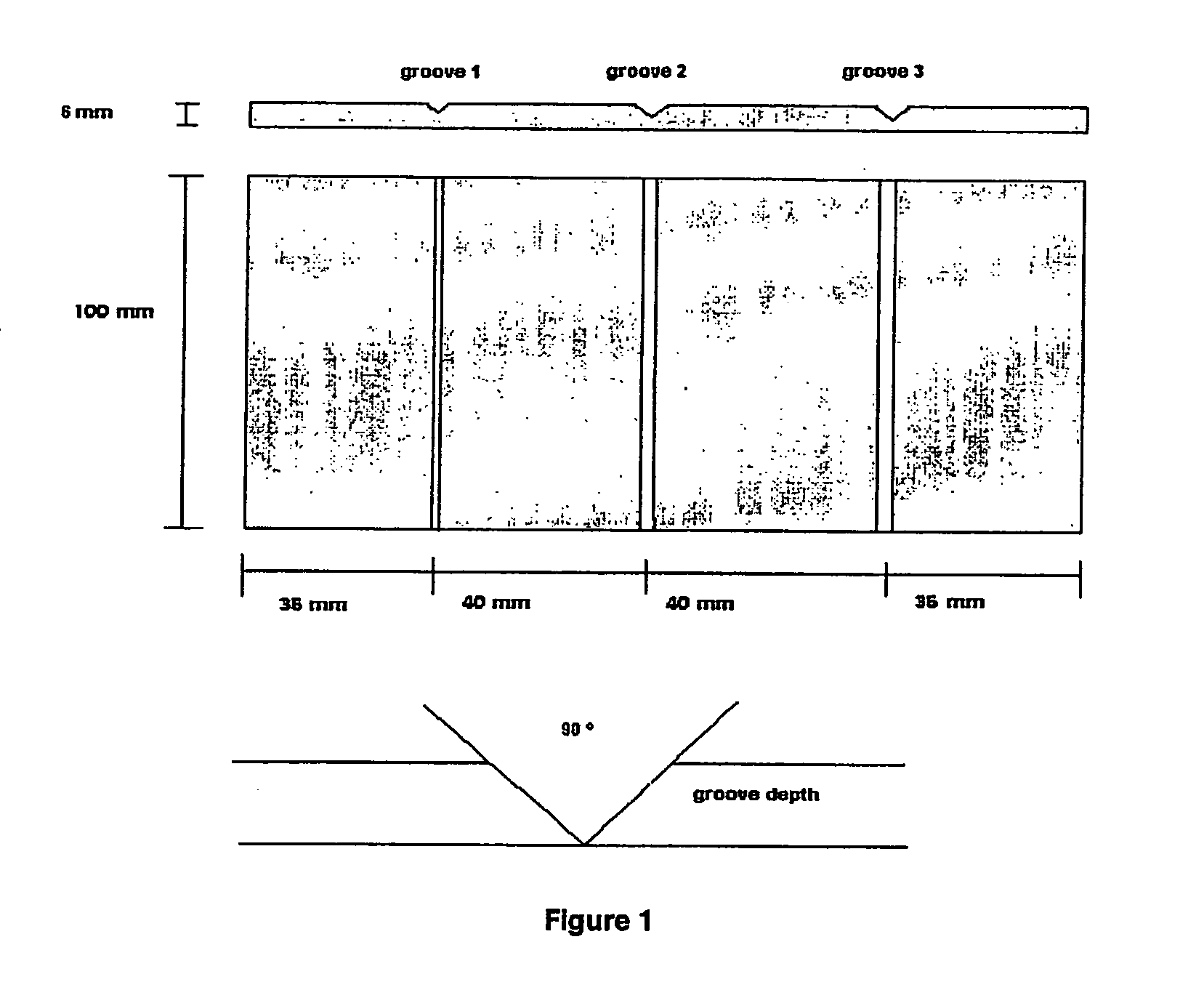Epoxy modified organopolysiloxane resin based compositions useful for protective coatings
a technology of organopolysiloxane and polysiloxane, which is applied in the direction of synthetic resin layered products, transportation and packaging, coatings, etc., can solve the problems of limited gloss and color retention when atmospherically exposed, significantly less, and no longer allow isocyanates use, etc., to achieve easy supply of color, reduce water permeation, and prolong service life
- Summary
- Abstract
- Description
- Claims
- Application Information
AI Technical Summary
Benefits of technology
Problems solved by technology
Method used
Image
Examples
examples 1
Preparation of the Epoxy-Modified Polysiloxane Compositions According to the Invention
[0083] In order to prepare the epoxy modified polysiloxane compositions according to the invention, a polysiloxane of formula (1) with a molecular weight around 1400 g / mol were combined in diverse ratios with different epoxy resins: [0084] Bisphenol A epoxy resin [0085] Bisphenol F epoxy resin [0086] Hydrogenated bisphenol A epoxy resin [0087] Hydrogenated bisphenol F epoxy resin
[0088] These combinations were cured with amines such as Jeffamines in pure or prereacted form (adduct form to reduce the volatility).
[0089] The epoxy modified polysiloxane compositions according to the invention have been prepared according to the method described hereunder (preparation of coating 6).
[0090] A pigmented base component is prepared by combining 240 grams of hydrogenated bisphenol A epoxy resin (epoxy eq. wt.=210-238 g / eq), 135 grams of a polysiloxane (for example DC-3074), 5 grams of a thixotrope agent, 5...
example 2
General Properties of the Coatings According to the Invention
[0092] Each epoxy modified polysiloxane composition was air-spray applied to a suitable test panel. The coatings were left to cure fully at room temperature for 2 weeks before being tested. After this curing period, the coatings were tested for relevant properties. The epoxy modified polysiloxane coatings according to the invention (1-11) were tested and compared against a comparative example. It is a commercial coating from Ameron sold under the name of Ameron PSX 700 comprising a polysiloxane, hydrogenated bisphenol A epoxy resin and an amino-silane as a hardener.
[0093] To simulate the cracking behavior of a coating on complex structures with potentially over-thickness a cracking resistance test was developed: In order to test the cracking resistance, groove panels were developed. The steel panel is 2.5 SA gritblasted and fitted with 3 grooves with a depth of respectively 0.8 mm, 1.4 mm and 2.0 mm. The design of the gr...
PUM
| Property | Measurement | Unit |
|---|---|---|
| particle size | aaaaa | aaaaa |
| thickness | aaaaa | aaaaa |
| particle size | aaaaa | aaaaa |
Abstract
Description
Claims
Application Information
 Login to View More
Login to View More - R&D
- Intellectual Property
- Life Sciences
- Materials
- Tech Scout
- Unparalleled Data Quality
- Higher Quality Content
- 60% Fewer Hallucinations
Browse by: Latest US Patents, China's latest patents, Technical Efficacy Thesaurus, Application Domain, Technology Topic, Popular Technical Reports.
© 2025 PatSnap. All rights reserved.Legal|Privacy policy|Modern Slavery Act Transparency Statement|Sitemap|About US| Contact US: help@patsnap.com



